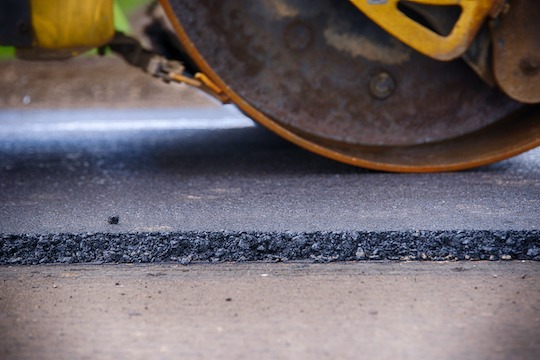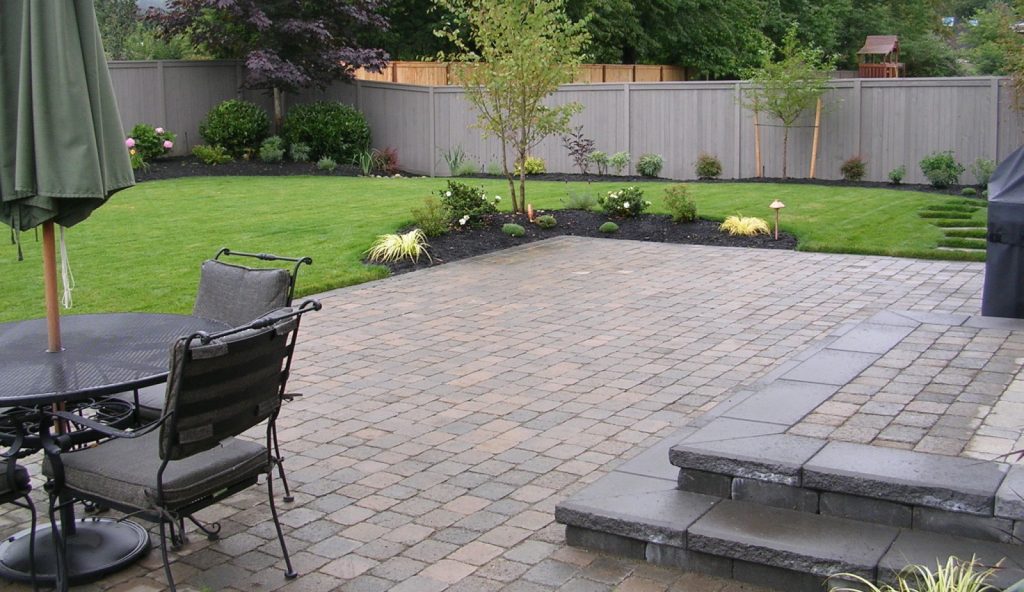Recycle asphalt pavement, or RAP, is popular in road building for financial and environmental reasons. Home and business owners, too, have the option to use it – with caveats.
The most recycled material in America, and probably the world, is asphalt. Given that most of the paved roads in the US, all 2.3 million miles of it, are paved with bitumen asphalt, that might not be so surprising. But reclaimed asphalt pavement (RAP) has its pros and cons.
The pros are clear: it’s less expensive, it’s environmentally beneficial, it’s aesthetically attractive, and if desired it can be permeable. But some claim it has its cons: there is varying quality, some of which might have more “squish” when heavy vehicles run over it. And it isn’t as darkly colored as asphalt made from all-virgin materials.
So do the good parts outweigh the bad? And what chances do homeowners take if they use recycled asphalt? Is the typical local asphalt contractor aware of the pros and cons enough to help the typical consumer seeking assistance from a residential or commercial asphalt contractor to upgrade their driveway or parking lot?
Start with the cons. A driveway handles different traffic than, say, a warehouse loading dock or a superhighway. Those roads and parking areas that have large, very heavy vehicles pass over them are subject to deformation and therefore need to have asphalt that is truly set and resilient to the traffic. But already researchers have developed methods to build stronger RAP, in part by creating blends of recycled and virgin materials, adding things such as cement and fly ash, and the use of geocell stabilizers (honeycomb-like networks of short walls that prevent spread).
With typical residential driveways this deformation factor is rarely an issue because even the largest SUV comes nowhere close to the weight of a semi-tractor trailer.
Aesthetically, recycled asphalt will not look quite as dark as is associated with a traditional asphalt driveway. But this too depends on the mix of recycled-to-virgin material used in the mix. Some consider this a superior feature, somewhat a departure from the dark color that is ubiquitous, a grayish color that perhaps blends better with other elements of the house, garage, and landscape.
Now, consider the benefits. While every driveway is different, as are paving companies, this is a case where using recycled materials for good (environmental/social benefit) reasons is also less expensive. An important ingredient in all asphalt is the bitumen binder, which is primarily sourced as a petroleum byproduct. Petroleum prices go through wild fluctuations, but that’s irrelevant when the source is an old, potholed road or driveway. While only 5-7% of the makeup of asphalt pavement, virgin bitumen constitutes about 70% of the overall material cost.
The environment benefits are pretty good given that the basic materials of pavement – aggregate, sand, and bitumen – come from ground up asphalt nearby versus being mined and shipped in from far away. It’s a primary reason why federal, state, and local governments have enthusiastically embraced RAP.
Wonder no more why about 90 million tons of asphalt are recycled in the US each year for roads and highways. It’s also why homeowners are choosing it for their driveways as well.






